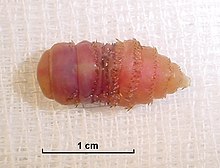 New to forum - need help identifying...
New to forum - need help identifying...  #182533
10 y
3,768
† Cross †
#182533
10 y
3,768
† Cross †
Lugol’s Iodine Free S&H
J.Crow’s® Lugol’s Iodine Solution. Restore lost reserves.
Heart Worms?
Hulda Clark Cleanses
Would someone please identify this parasite, if it is a parasite?
I'm on day 3 of diatomaceous earth after suffering for years with candida and rectal itching. I have also been taking about 3 grams of vitamin c every day for about 3 months. This is the first time I have eliminated any parasites, except for yeast. It sort of looks like a liver fluke, but I haven't found a photo that looks exactly the same.
Thanks for your help. Any advice greatly appreciated.

More
- Re: New to forum - need help identif... #182533
10 y
2,961
Lugol’s Iodine Free S&H
J.Crow’s® Lugol’s Iodine Solution. Restore lost reserves.
Heart Worms?
Hulda Clark Cleanses
-
 Bugged out: Specimen Looks Like Bot ... ICU
10 y
3,887
This is a reply to # 2,159,291
Bugged out: Specimen Looks Like Bot ... ICU
10 y
3,887
This is a reply to # 2,159,291Bugged out -
The ridged, brown color, maggot shape of your specimen looks amazingly like a Bot Fly Larvae - species Cuterebra or Gasterophilus Intestinalis!
Pictures of Cuterebra:
http://squananimalhospital.com/files/2013/10/bot-fly-3.jpg
http://bugguide.net/node/view/271832/bgimage
Picture of Gasterophilus Intestinalis:
Have you been hiking or camping outdoors in the woods in recent months?
The first stage of Cuterebras usually infect rabbits & rodents, but sometimes enter the nose or mouth of dogs & cats, & migrate within their bodies to complete their life cycle.
Other species of Bot Flies (Dermatobia hominis) burrow into the scalp or soft tissue of arms, legs, back, etc, of humans.
But I've never read any case reports about any species of Bot Flies completing their life cycle within the GI tract of humans!#?
Are you sure it emerged from your rectum? Did you check your bum to see if it emerged from one of your cheeks?
Maybe you should submit the photo of your ripply, grubby, maggoty specimen to "Ripley's Believe It Or Not"?
Well, whatever *IT* is, at least it's *OUT* & no longer *IN* in your body!#? (lol)
Cheers - ICU
http://en.wikipedia.org/wiki/Cuterebra
http://en.wikipedia.org/wiki/Dermatobia_hominis
http://squananimalhospital.com/general/bot-fly-larvae-in-dog-in-manasquan-nj/
"There are 34 species of bot fly larvae in North America, their scientific name is Cuterebra. They usually infect rabbits and rodents, although occasionally larvae mistakenly infect dogs and cats. The adult is a fly that looks like a bee, but doesn’t sting. The adult only lives a short time and it’s main goal in life is to lay eggs by rabbit and rodent burrows. The eggs hatch into larvae and are ready to attach to a passing animal to continue their life cycle.
While a dog or cat is rooting around a rabbit or mouse den a larvae can attach to the pet and enter the pet through the nose or mouth. Contrary to popular belief the bot larvae do not burrow through intact skin. The larvae will migrate inside the body and cause one of three syndromes:
1. Larvae can migrate to the brain, especially in felines, and cause neurological signs like circling, seizures, blindness or behavior changes. This is the typical cause of Feline Ischemic Encephalopathy.
2. Larvae can migrate in and around the lungs and trachea causing respiratory signs.
3. Most commonly, larvae eventually migrate to the skin and form a warble, or swelling where the larvae make a breathing hole. (See picture above) The larvae will grow and mature here, then pop out as a maggot 3-6 weeks later to burrow in the soil. In the soil they pupate into an adult fly to continue their life cycle.
Treatment of bots in the skin of pets is simply by extracting them surgically. (See picture above) Oftentimes the opening needs to be made bigger so the larvae can be pulled out intact. If the larvae breaks apart under the skin an allergic reaction can occur. Treatment of larvae in the brain of cats depends on a case by case basis, but usually requires an MRI for diagnosis and a variety of drugs for treatment. Treatment of respiratory cuterebra also involves a variety of drugs.
For more detailed information on Cuterebra in pets see http://www.capcvet.org/capc-recommendations/cuterebriasis"
- Re: New to forum - need help identif... #182533
10 y
2,961

